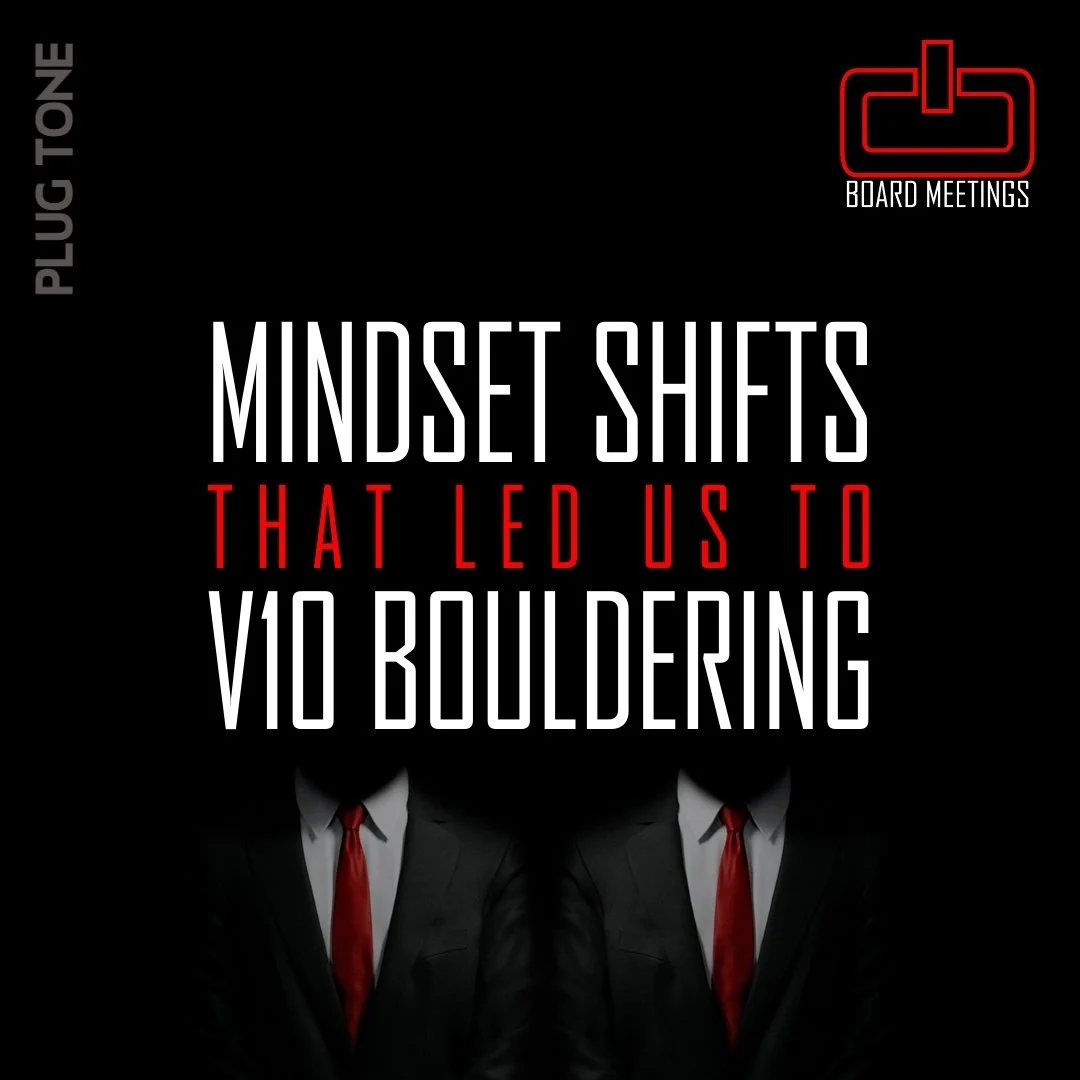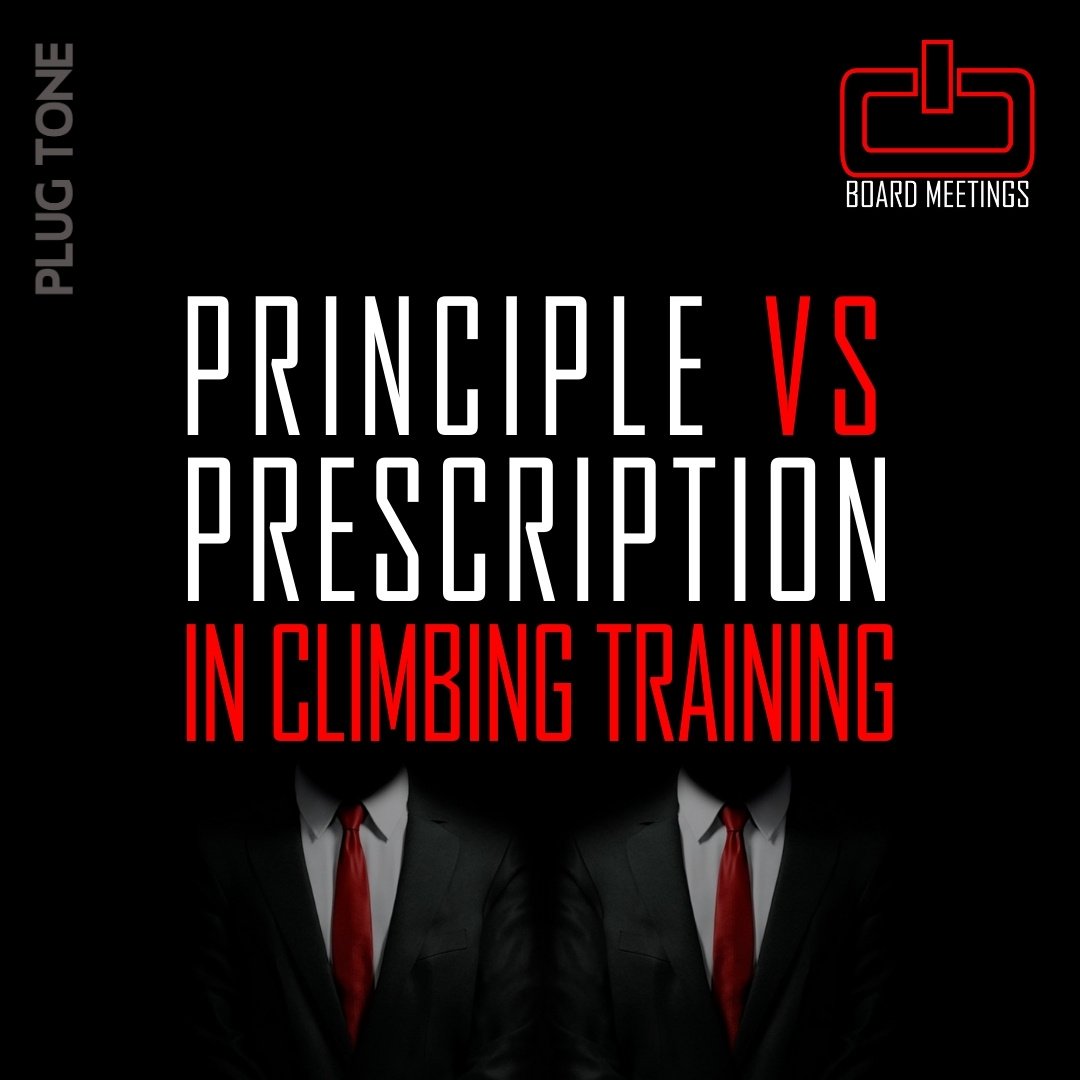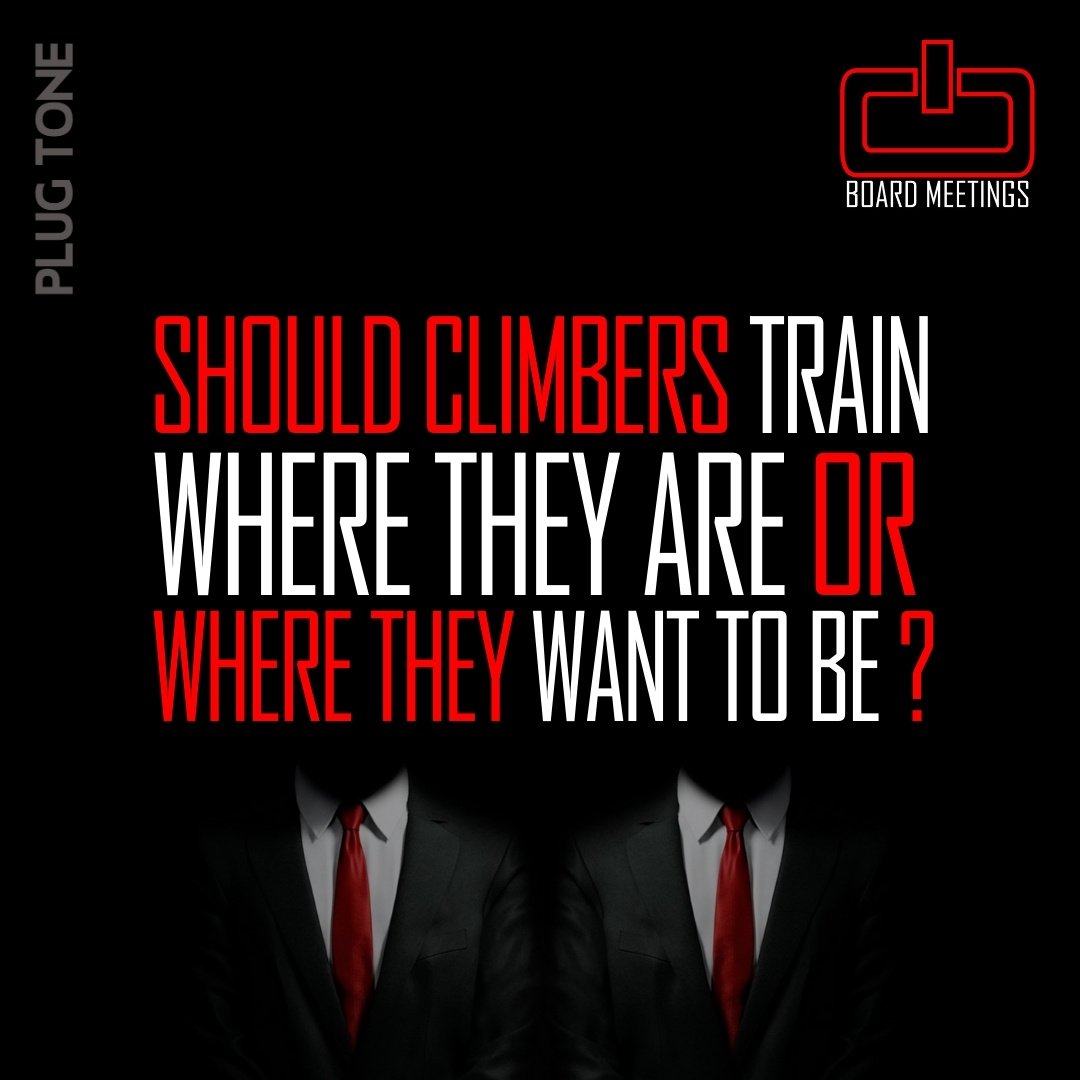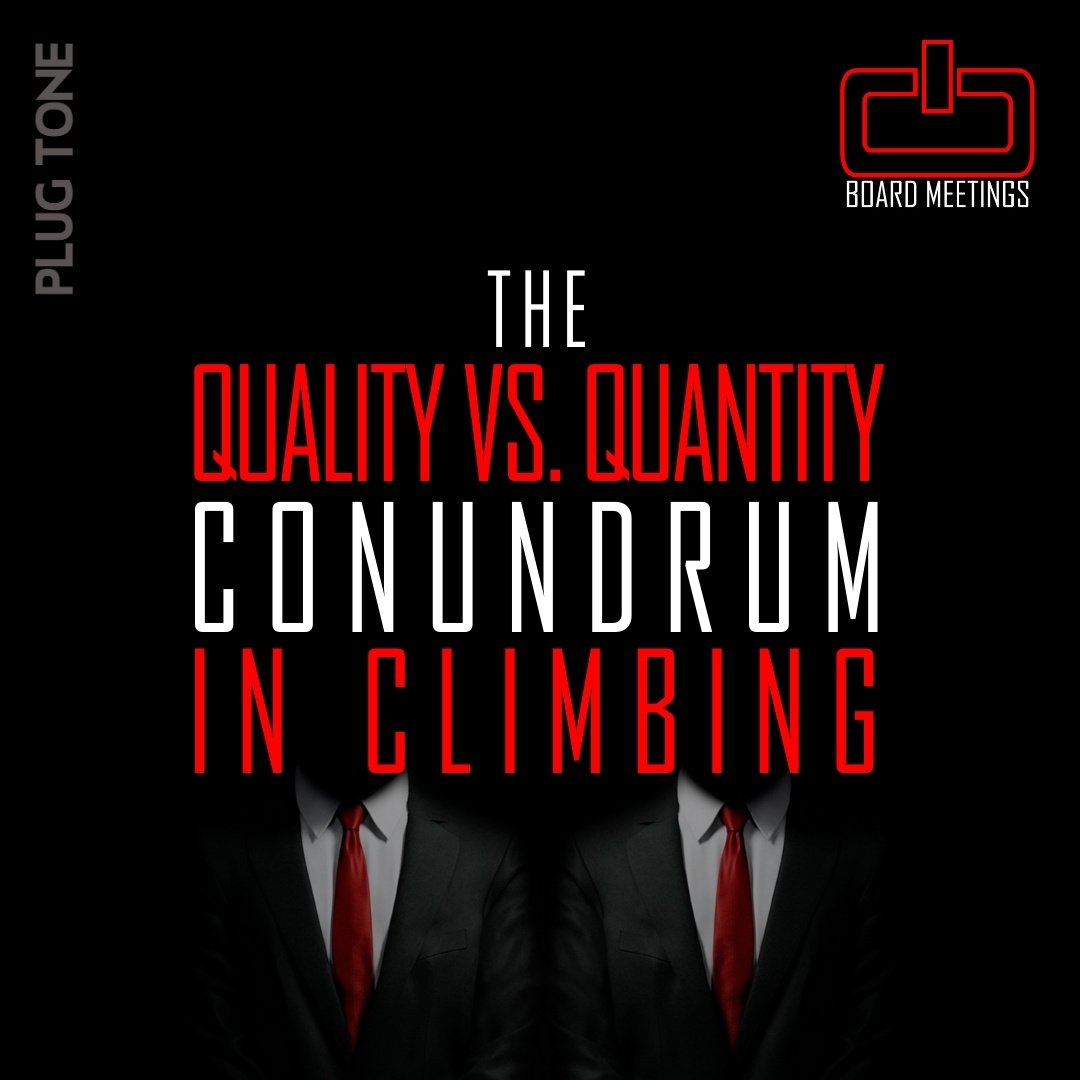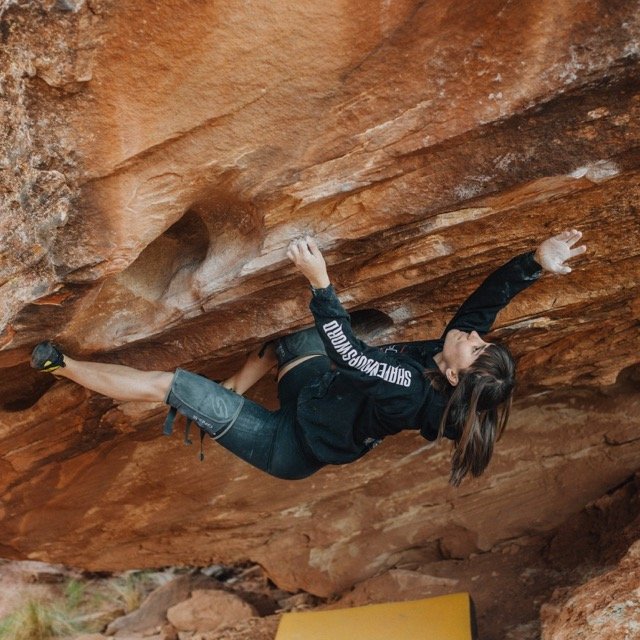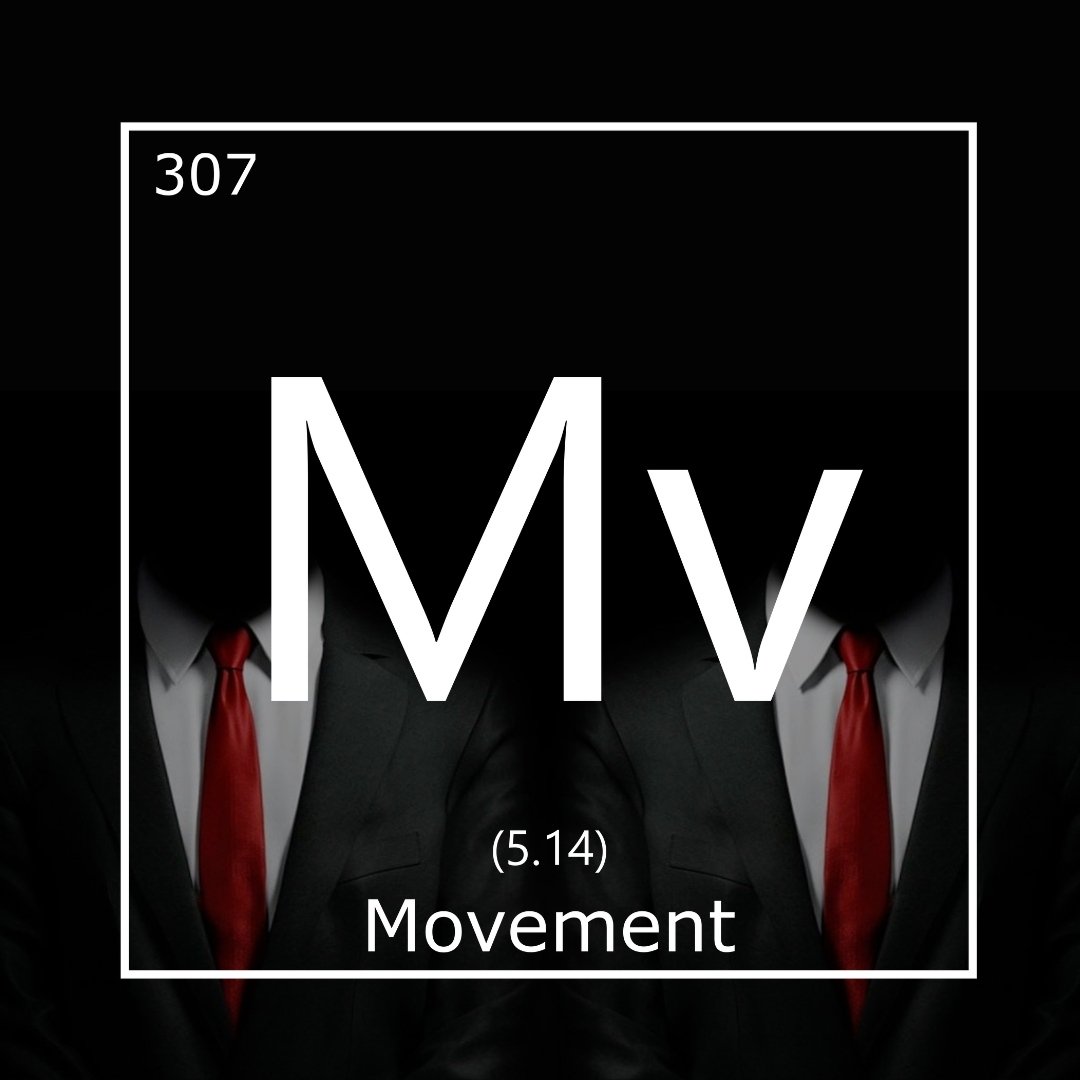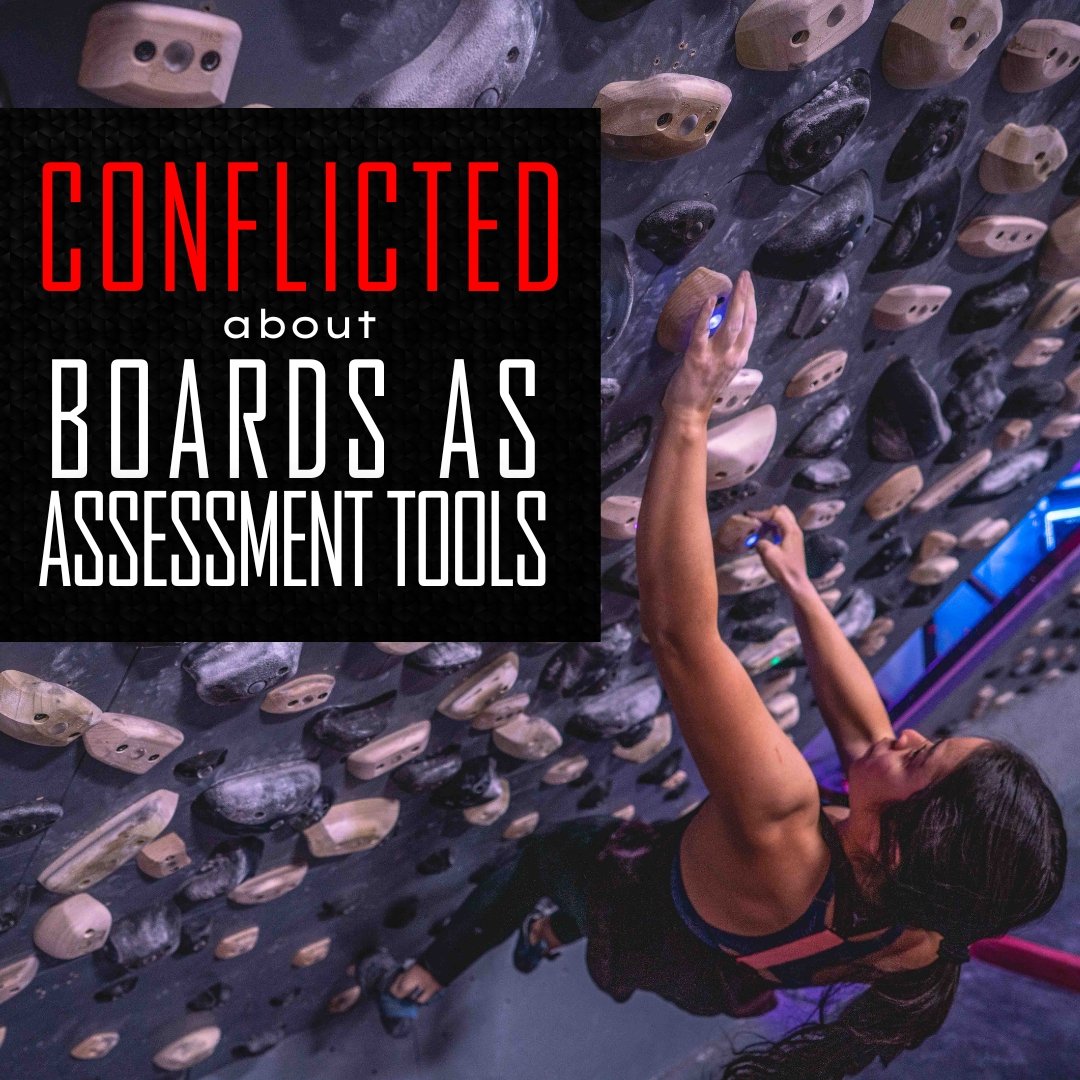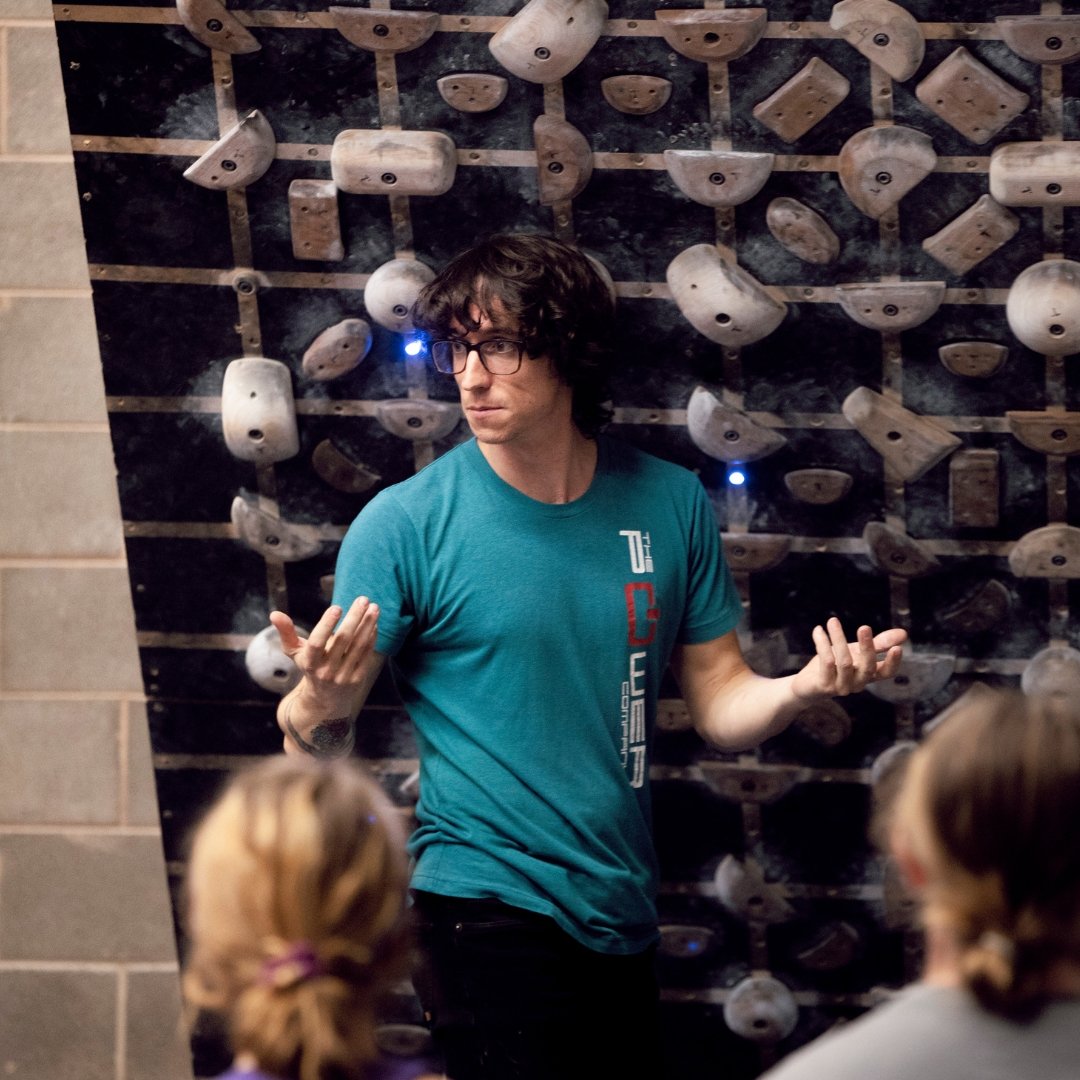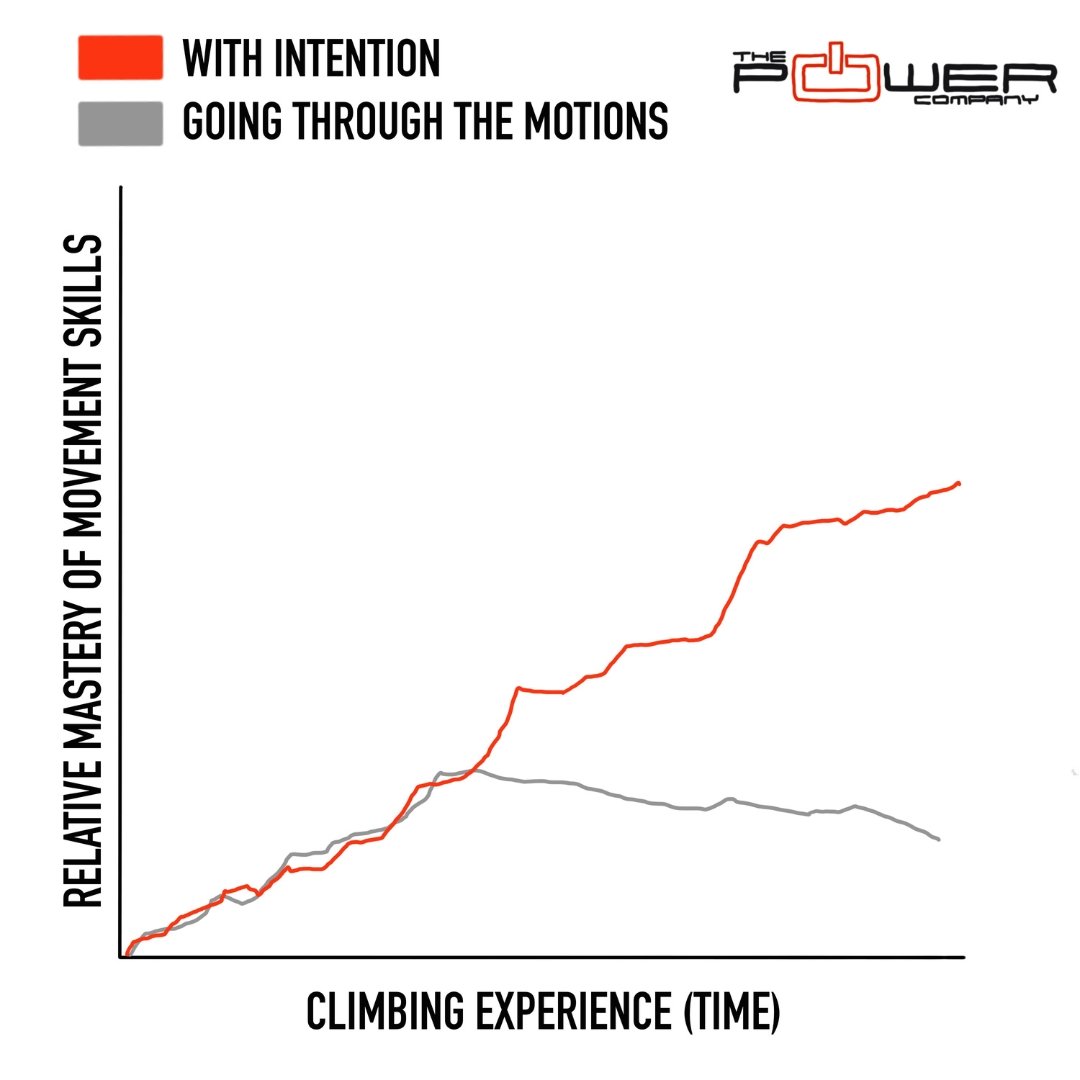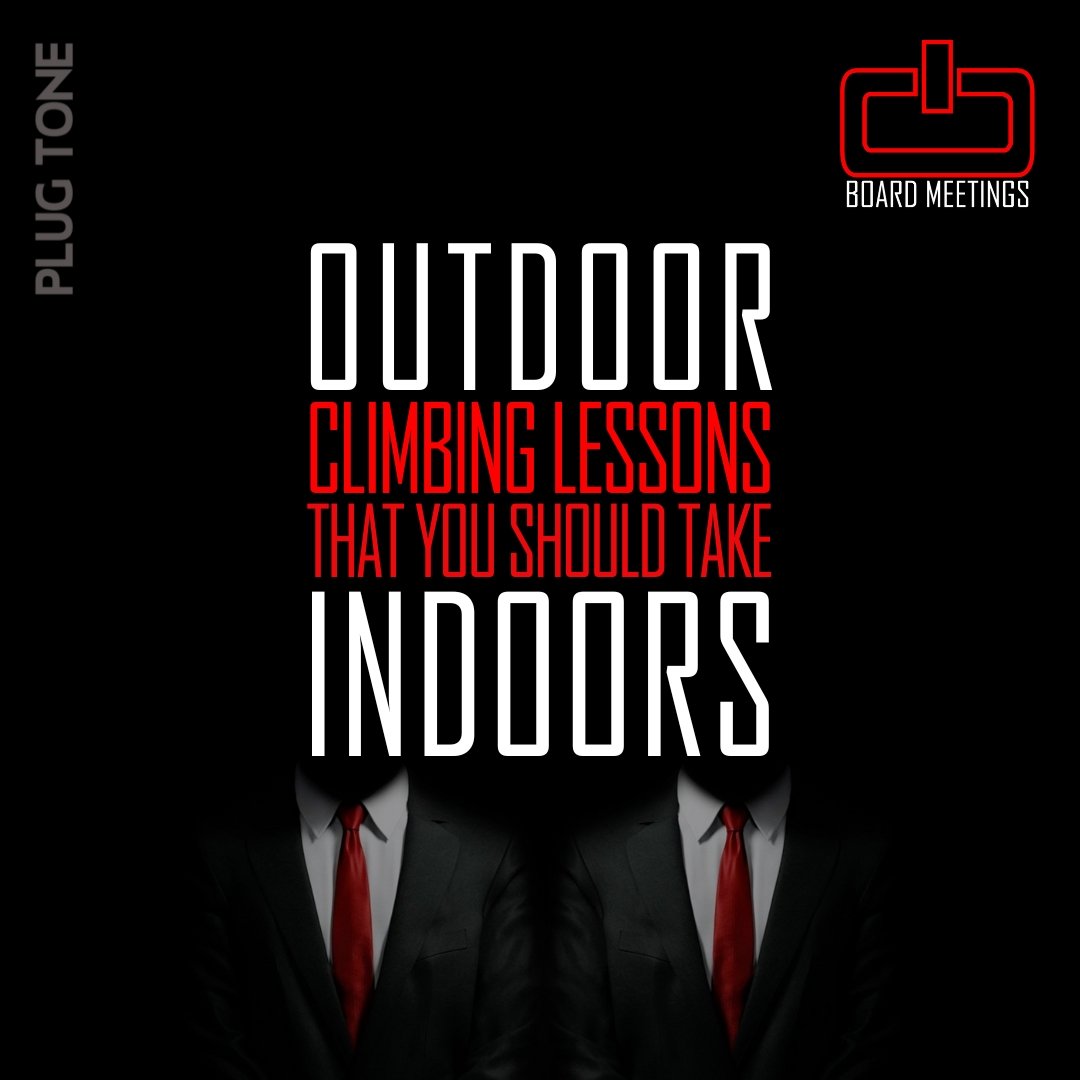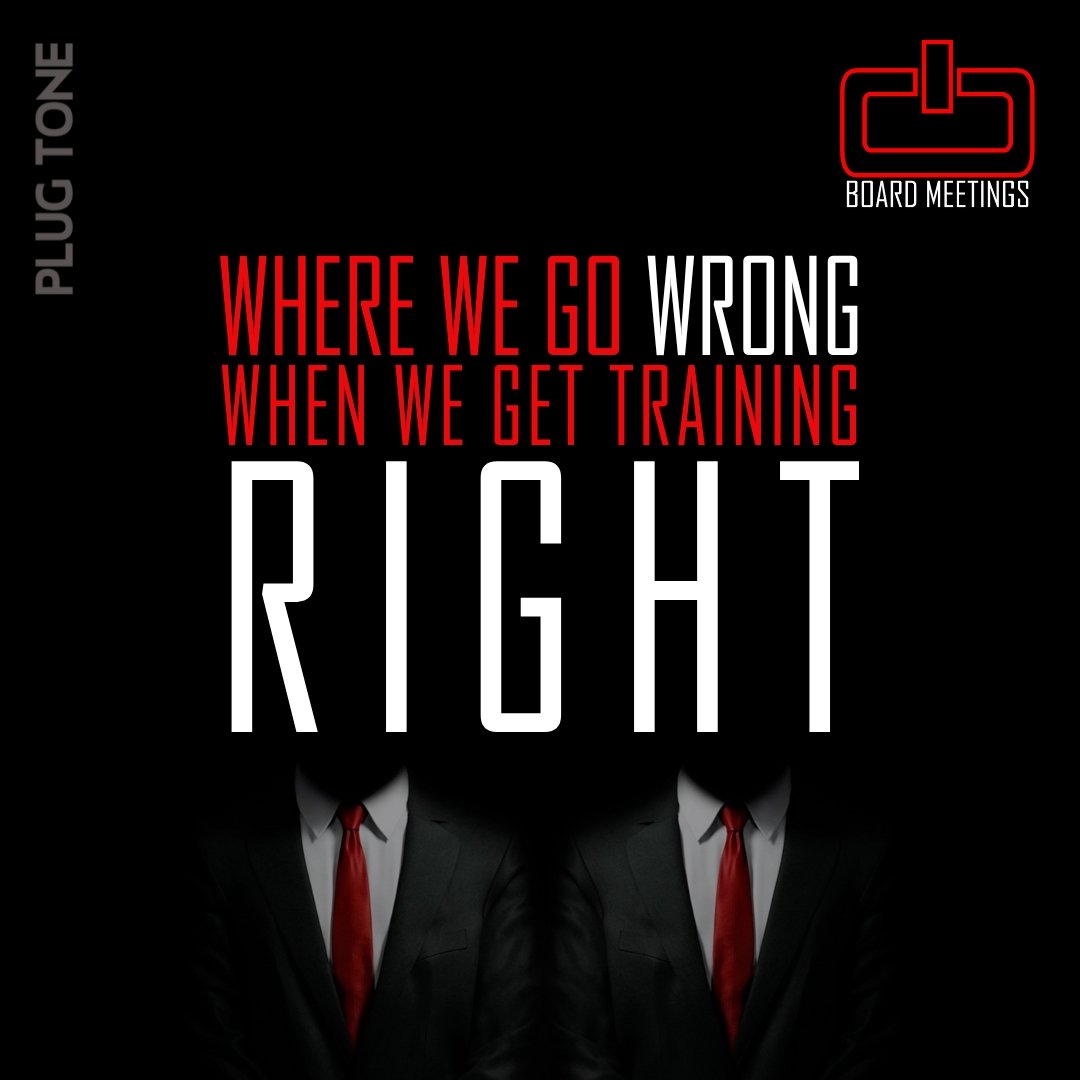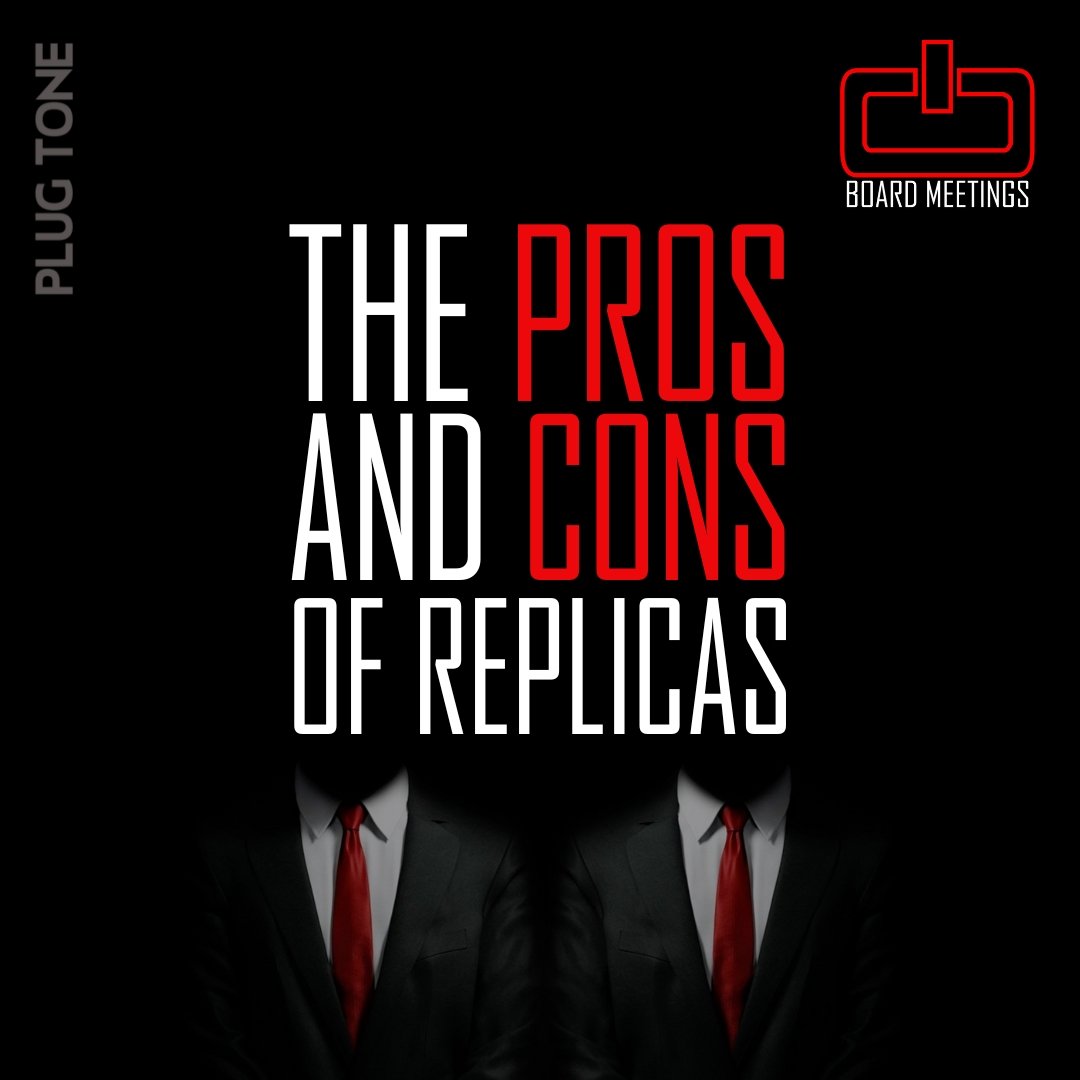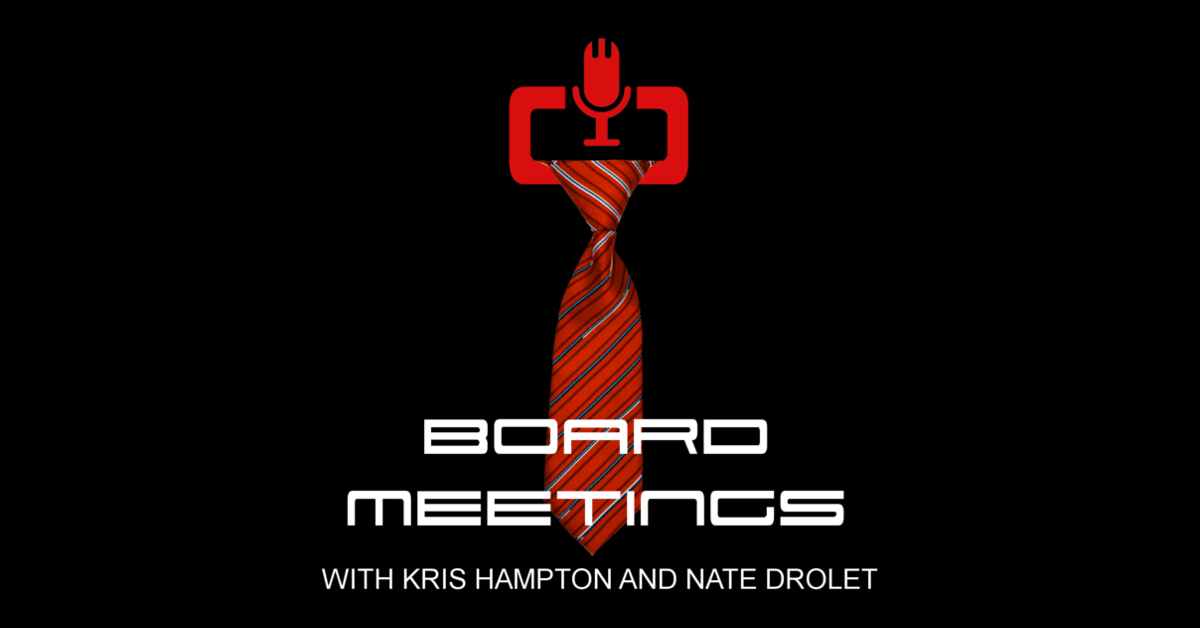Board Meetings | The Pros and Cons of Replicas
It's all the rage. Watching Will Bosi and Aiden Roberts work on the Burden of Dreams replica is fun, but is it valuable for the rest of us?
Like any other training modality, there are pros and cons, a time to do it, and a specific type of person that replicas and simulators will be effective for. There are also climbers that replicas might actually be detrimental for. Is that you?
Kris and Nate hash it out in this episode, which is the first half of a full episode available to our Patrons and Subscribers.
FULL EPISODE TRANSCRIPT:
Kris Hampton 00:31
What's up everybody? I'm your host, Kris Hampton.
Nate Drolet 00:34
And this is Nate Drolet.
Kris Hampton 00:36
And today we form just ourselves because this is actually just a Patreon episode. I guess I shouldn't say just a patron episode, I actually enjoy those conversations we're having over there, maybe more than the regular podcast. But this is a patron episode. Had the first half of it, you're all getting the whole thing the patrons are getting. We just wanted to give you a taste of the sorts of conversations we're having over on the we scream like eagles podcast that is just for patrons. And we're here to talk about this like, it's like a freight train right now the concept of replicas and simulators, especially with Will Bosi and Aiden Roberts. And Stefano jumped in there to try the burden of dreams replica. And I think there are several burden of dreams replicas floating around like Aiden has one at his house lattice has one at their headquarters, they seem to be popping up everywhere. Yeah, I think it's a super fun thing. I think it has some really big uses. And maybe some. Maybe it's also a really easy thing to take too far. For some climbers, maybe most climbers, but I think it's really fun. Have you been following it?
Nate Drolet 02:04
Yeah, I think it's cool. You know, I, for a long time, had strong opinions about simulators and replicas, like I'm a huge fan of them. But I've always said, I think people get too much into the details when trying to set simulators. Like they want the holes to be perfect and all this. But this has always been working under the assumption that you just have to go to a bucket of holds, choose something that looks close enough. We didn't like the idea of being able to 3d print, like scanning holds, and not just holds like, the thing that is fascinated me about the burden replica specifically is that they're giant patches of the wall. Like it's not just like, oh, this is the exact little cramp. It's a full, you know, like, one foot by two foot patch of wall and they scan them and they 3d printed them. Amazing. Like, that completely changes the game. And it has changed my opinion entirely. On if, obviously, if you have the technology, it changes my opinion on going for precision over more vagueness and like general concepts.
Kris Hampton 03:22
Yeah, I don't think it's changed my opinion. But I do think it's added a new layer to it, maybe a higher level layer to it. I sort of still feel like for the vast majority of climbers, even if you had the exact replica, it's not all that useful. And I'll explain why later here. But one of the things I love about this, like burden of dreams replica that's popping up everywhere, is that there there could be this world in which replicas and simulators are popping up in gyms all over the world. And you could have a you know, burden of dreams replica in a gym in Chicago and in a gym in Florida and in a gym in Austria and you know, they could be anywhere and I think that part is really fun like skate parks have done this you know if there's a if there's a really famous like street what's the word I'm looking for here or air you know, like, like a famous curb or a famous handrail or famous bank, some skate parks in different cities will replicate this bank or this handrail, so that you can skate this Famous handrail you've seen in Tony Hawk Pro Skater or whatever, you know. I think that's pretty cool.
Nate Drolet 05:08
Yeah. Yeah, I do think that aspect is pretty awesome. You know, and that's what's kind of something that's kind of fun about this idea of so many people chasing this right now. Like, because there's awesome. I'm blanking on his name right now. Russian, not Vadim. Who is it? Timinov? He set a replica of Burden of Dreams on a moonboard. And him and...Like there's a video of him and a buddy going out. And measuring the holds like in the middle of the summer, on burden of dreams, and then going back and setting a replica on, you know, on the moon board, Aiden's got his will as his I'm sure there are more that were just not hearing about two, maybe not I think I
Kris Hampton 05:56
saw another one. I saw another one on the internet the other day. I don't know whose it was, but I'm pretty sure it was a burden of dreams replica.
Nate Drolet 06:05
Oh, I think there is another one. Because there's a Japanese climber who's been trying it for several seasons. Yep. Maybe you had his name down. Maybe Riyu, I can't remember. Off the top of my head. It's easy to mix up the ultra strong Japanese climbers because there's about 100 of them. But yeah, I think he might also have a trainer, I could be wrong. But I think it's there's so many people chasing this one collective goal. But in different parts of the world. Like it's not like they're all having to come travel to this one single location, hope for good weather to get to try it together. Like they're all doing it separately. But the many of them are documenting it as they go along. So we get to like, watch this separate chase around the world for this one common goal. I think that's really rad.
Kris Hampton 07:02
Yeah, and there's like that sort of brings up one of the things I think is really interesting about this. We think that it may be speeds up the process. Like that's sort of how it feels. But I'm not sure that it really does. We just haven't gotten to see the process much on the world's hardest boulders, like you would just read in the magazine that Fred Nicole did another really stupid hard thing. And you have no idea how many times he tried it, or how many times he went there, or whether he was doing similar things at home to prepare, we have no idea really what the preparation looked like, in the past versus this, like highly documented, we get to see all of the steps in the process, which I really like. But I have a hard time, like comparing them one to one because we didn't see the whole process before and we don't know how long it took.
Nate Drolet 08:06
Yeah, I do think that's fair. And I think I think one of the biggest things about this that I really appreciate is the fact that it just makes putting in that time more accessible. Yeah. Like I think it was the episode will bosey and Stefano, were climbing on the trainer together at lattices headquarters, in will was like, Oh, this is my ninth session on this. And, you know, I still haven't even done two of the moves yet. And like, so if we say, okay, had he been, would that be any faster than if he was actually trying it? Who knows, but it allows him to be at home, you know, see family do normal things like, right? I don't know, I saw this kind of funny comment the other day that I had to read like multiple times and read the other comments, this person left to make sure this wasn't satire.
Kris Hampton 09:04
Sounds like the internet.
Nate Drolet 09:06
Yes, this person was like, you know, this is really just killing the spirit of rock climbing. Hard projecting is supposed to be about flying across the world, leaving your family having to deal with that stress, taking time off of work, you know, having to battle weather battle skin on this moment to try and get things done in a really tight window. You know, I was like, you might as well say you should be contributing a heavy carbon footprint while you're at it, you know, this is the spirit of rock climbing. It's like, well, you just listed a ton of negatives. Oh, also there was like the cost, you know, all these things. Like, you're really selling this for me and I had to go down and be like, wait, is he this is satire and just a really well written? It's like no, he actually this person really felt this way. Yeah,
Kris Hampton 09:54
I've actually seen comments like that quite a bit and I I do appreciate the the lower impact that this sort of concept has, where you can train for to home, you don't have to be under the boulder every day lugging pads back and forth flying across the world to try the thing. Whatever it is, it's way lower impact than the other method. And but I've seen this like experiential debate several times, like this ruins the experience of trying a rock climb. And maybe what's being missed here is like Aiden Roberts and Will Bosi are not not rock climbing. Because, yeah, in between their posts of them trying the replica they have, they're also going to doing other boulders and other sport climbs and climbing loads of things. And not every experience needs to be the same.
Nate Drolet 11:01
Yeah, not every person's experience needs to be the same.
Kris Hampton 11:05
Yeah, people romanticize this whole, like, I've walked up and I found this boulder in the woods. No one had ever touched this boulder. You know, they they romanticize this shit. And maybe that's not the experience everyone's looking for. So trying to push your experience that this is how rock climbing is supposed to be. Just doesn't work for me at all. Yeah, it's not a valid argument.
Nate Drolet 11:33
I think that's one of the great things about climbing is you get to, like you get to climb as you are. And you get to enjoy it and the way that you enjoy things most like if we were just talking about this before hopping on the call, like, there are times where it is nice to just go out and have your own solo session. And be like, Oh, this will be my own thing, my own connection with a climb. Or it will be like, Oh, this is I want to go have this experience with other people. You know, sometimes I just want to go out and do a rock climb to check that box. Like, totally, there is no mysticism about it. I'm here to send the thing and go back home. Yeah. And then there are times where it's like, you know, you do a climb, and you're almost devastated. Because the whole experience was great from start to finish. And you're like, Man, that was like six well spent days. I enjoyed every moment of that. I wish I could have more. And those are so rare and amazing. But you're not going to get those all the time. You know, it's cool when they happen, but you can't force it and can't expect it.
Kris Hampton 12:36
Yeah, and let's be real here. No one's ever going to have the experience nollie had where it looks like he was in a forest trying this boulder by himself because now the area's clear cut. And it's like 30 yards from a road. And it's not a pretty place to be anymore. It's just a boulder in the middle of a clear cut meadow now,
Nate Drolet 13:00
you know I hear that was actually a will bosey went and clear cut it to make his simulator more realistic to make the actual boulder more like a climbing gym. clear cut the entire forest. You heard it first. That's hilarious. Yeah, I agree. It's It's very sad to see how it is now you're like, Oh, this is just this is just a boulder in a real ugly field. Right?
Kris Hampton 13:26
Yeah, so why not turn it into a gym climb? Yeah. And I also sort of feel like, you know, maybe you're, maybe for you, your experience of the thing has real depth. And you that's what you want out of climbing. But I feel like personally, if that's the only way you approach this thing you say you love then you're living a really fucking shallow life that maybe you need to expand to other experiences. So you know, that's my opinion that whoever this commenter is is allowed to have their opinion too. Yeah.
Nate Drolet 14:09
So 3d printed simulators, what are your like? Now that they are like fully a thing? It seems like I mean fully a thing there's a handful of people in the world who have them it's not like everyone's going out and buying 3d printers but what I honestly suspect
Kris Hampton 14:25
it's only a matter of time before some company and you know, if no one's thinking about this, they certainly should be should be printing classic climbs sending an instruction booklet around that shows the layout of the holds and the angle it should be at and let gyms with with you know walls that can be adjusted for angle put up like that every gym should just have a wall that's like classic climb of the month. You know, yeah, Karma now lives in our gym. You know, Burden of Dreams now lives in our gym? Or How amazing would it be to have some classic V5 from across the world, in your gym for everybody to try? I think it's only a matter of time before that happens. And frankly, I love that idea.
Nate Drolet 15:22
Yeah, there's a company called mimic holds, I think, or maybe out of the southeast that they do print a lot of different boulders. I don't know if it fully comes. I'm sure it comes with instructions on how to do it. How to mount it.
Kris Hampton 15:37
Yeah, there's quite a few companies now that are printing them. I haven't seen anybody or gyms yet embracing the like, Yeah, let's put up the classic climb.
Nate Drolet 15:47
Yeah, I've not seen it like fully embraced by gems yet. It is. I mean, that does bring up kind of an interesting point on this is boulders aren't sheer 40 degree faces with no kickboard like right. Everything has weird angles. I remember, I think Aiden went out to the boulder. And he was like, Oh, he's like this boulder. Even though it looks straight actually has a bit of a wave to it changes angles. Will Bosi's, his simulator is actually not as steep as the real five degrees different. Yeah. You know, there are also I found it really interesting when he went out and try the boulder. He was just when he sat down underneath it in the very set. The second he sat down, he was like, oh, no, my start foot was in the wrong place. Like his simulator, I can't remember if he put it too far, or if it was further out in the real world.
Kris Hampton 16:47
But I didn't realize that I thought
Nate Drolet 16:49
that was super fascinating to have something that's 3d printed. And like that we can still have error with mounting holes and like taking measurements and then putting it down. But this is a boulder that's, I mean, if you want to try and replicate a boulder in the gym, that's as close as you're going to be able to get it's almost a perfect 45. But a lot of problems like they're weird, you know, you said it'd be cool to have like a Karma simulator in a gym. Like one of the hardest things about that boulder is it's just a giant bulge. Like right, it's just super strange. And so many boulders are the second you start trying to simulate boulders and set your own replicas, you immediately realize how non uniform boulders are out in the wild.
Kris Hampton 17:38
Yeah. And I like that idea. Because that's also going to punch the people in the face who are like, we don't need these big macro holds these are stupid. Because to make something like karma, even to make something like burden of dreams, exactly replicated, you're going to have to have these big sections that are like, wider at this spot thinner at this spot, so that they sit off from the wall and exactly the right way, it's not going to be these tiny little holes, it's not like you're just replicating the crimp, you're also going to have to replicate a big portion of the wall so that it achieves the same angle in relation to the wall that you're sending it to, if you're sending it to a gym with a adjustable flat plane, you need to make it so it sits off the wall a little bit in the right way. So you're going to end up with these big macro sections of wall, which I think is very cool, and changes the way we interact with it and probably simulates outdoor climbing far more than just a tiny little cramp on a wall. Totally.
Nate Drolet 18:58
Like I think we're going to end up maybe not immediately, I think we're going to start to see more. three dimensionality in spray walls in. Yeah, like boards, things like that. Like I think that's going to be it's going to start to be adopted, I think it's not quite there yet. If you look at like dye coin mottos, Jim, the wall he trains on it's a giant spray wall. Those holes are enormous, like, yeah, there's a lot of three dimensionality to that entire wall. And he's pretty good at rock climbing, I guess. Like it seems to work out well for him. You know, and he does have I think like a 20 degree wall that's just small murder crimps covering it right. But his big steep walls are very unique in their shapes. Interestingly, while we're on the topic of I mean, we're going to be on the topic of trainers this entire time, but with angle changes. I don't know if you saw this, but Yves Gravelle is currently rebuilding his home wall. He's got like a tiny little wall I think it was a 45. Yeah,
Kris Hampton 20:01
he's got a miniature little wall. Yeah,
Nate Drolet 20:03
he recently just changed the angles to now it's like a 50 to a 30. And anyone following at home, might know that Yves has been projecting tear mayor. And he's had some tear Mayor trainers. Now he didn't come out and say it on his story in this but that having seen the boulder in real life, that is the angle change that the crux happens that it changes from like a 50 to a 30. And that is the entire bulk of the boulder. So I wonder and Yve's if you're listening, I don't know, you know, you're probably picking up something really heavy as you are. You can reach out and tell us, is this a terrible trainer? Are you? Are you really like rebuilding your whole wall for one boulder? If so, that's amazing.
Kris Hampton 20:47
And if that's the case, I would also be curious to know, are you going to make the holes as heinous? Where you're risking? Ripping the pads off of your fingers every time you try the replica? Yeah. So it also loved to know that, that
Nate Drolet 21:06
man, it was kind of funny, then this, this definitely something that, uh, I think we got to talk with about the risks of using these 3d replicas. Because I think there are quite a few downsides. But one, one absolutely is direct skin damage, like you are, especially if you're using it leading up into a trip. You're putting holes exactly where that same exact climate is going to do that. In the video of Aiden and Will, Will was just like, man, it's like, this thing's kind of sharp. And Aiden was just like, I was I wrote it down. He's like, Yeah, the novelty wore off really quickly for me. Like, it makes sense. And I mean, I think Aiden pulled on twice on that, that day on the replica and he was like, Well, I just split my pinky. That might be the session for me. Yeah.
Kris Hampton 22:01
Right. Yeah, that's a real thing. And, and it's also worth saying here, like, just because you're training on a replica of the hold, doesn't mean you're also building the skin for that hole. Because it's not going to be the exact same texture, it's not going to be granite, like the granite boulder is or sandstone, like the sandstone boulder is, it's going to be much harder to get that exact texture. So the skin that you're building up, if you are building skin, instead of just removing it, it may not be the skin you want. Anyway, it's going to be plastic skin, which is anyone who's spent a lot of time going from the gym to outdoors knows there's a big difference.
Nate Drolet 22:44
This is such a nerdy thing to talk about.
Kris Hampton 22:49
Well, it is I mean, it's a nerdy thing, you
Nate Drolet 22:51
know, it totally is. It's just hilarious thinking about it like but yeah, no, I completely agree. And now I'm wondering, I'm like, what is it about it? I mean, because it's definitely not the shapes like, but you know, I just went to font and like, I had been climbing a lot inside because it's been snowing. And I'm like, what, what is the difference? Because it's not like Jim slopers would have prepared me my skin for that. Like, I don't know, it's still it is interesting, but but I think that is one doubt one obvious downside is that skin maintenance, with rep with perfect replicas,
Kris Hampton 23:27
totally. One of the things I like about the idea of having the replica, especially as the like footprint gets bigger and bigger. And this is a con against the way we're doing it now, where it's a pretty small footprint is that it's tougher to find alternative beta and alternative sequences, you know, just because burden of Dreams was done one way doesn't mean it should be done that way. And in fact, I think in wills video, he finds different beta using a heel hook that he's like, Oh, shit, this might work. Yeah. So you don't get to explore those things the way that you do on the real rock. Maybe once we have a huge footprint of these things that will happen, but at least currently with the small footprint holds relatively small footprint holds. You don't really get that opportunity.
Nate Drolet 24:26
Yeah, I think there's there's definitely more than there was I will say, one thing that really impressed me is that they were able to really play with the microbiota of how they're gripping the start hold. Yep. Which I thought was super cool. In the footprints are large by hold standards, you know handhold gym hold standards, but I agree, like there's you know, another good example of this is not how Nalle's initial beta got broken by Jimmy Webb. Um, Yep, like Nalle had been trying the boulder. I think already for a few seasons that point and was just like, oh, this is impossibly hard, but I'm super stoked on it. And then I believe Daniel woods and Jimmy, maybe Dave Graham, were all out there for the SISU masters a big comp. And now I was like, Oh, y'all gotta come out here. And I think Daniel climbed on it, but I don't believe Jimmy actually did. But Jimmy was like, Oh, why don't you use this foot sequence, like just do this like this? You know, high foot match, bring the low foot down and kick a foot way out, right? And immediately Nalle was like, oh, no, like, he's like that just shaved like a whole grade off of this boulder. And I think this was like in the blog era. Because I remember reading, he was even like, a little disappointed in the time. Because to him, it was like, oh, there is this ultimate, like, life level really hard challenge that he wasn't sure if he'd ever be able to do even. And then when Jimmy found this foot sequence, the fact that it brought it down a notch. He was like a little disappointed that it existed.
Kris Hampton 25:59
Yep. But yeah, we love. We love to romanticize the idea of these boulders that have just enough holes. And if they had any fewer holes, they wouldn't even be possible and any more holes, and they'd be easier. And then someone else comes up and finds different data using a different foothold, or even a different handhold sometimes, you know, finding an intermediate things like that they exist on almost everything.
Nate Drolet 26:26
Yeah, yeah, absolutely. And it I mean, this is a good example of how you had a trainer only for nollies original beta, you never would have seen the other way. And I mean, watching will now climb on the actual boulder. He's doing a lot of unique, creative things now that he's actually there. Not to say that using the simulator was not useful. I think it was, I mean, clearly very useful. Totally. Um, but I do agree like you can. There's so many holes, you just won't see if you don't have them in front of you.
Kris Hampton 27:03
Yep. Yeah. And I think you know, what you just mentioned about Will, having trained on this replica, but then going and still doing creative things. I think that sort of says everything about who should be using replicas to this degree. You know, at this high level replica is very good for the climber who's already adaptable, who already knows how to look for creative solutions and fit things to themselves. Whereas maybe it's not as valuable a tool for someone who's still progressing through the like, intermediate levels of climbing. Yeah, well, at least training for a specific project, it could, it could still be just as valuable. If your gym puts it in there for a while, and you get to climb on this thing for a month. And then a month later, there's another thing. But if like, your whole focus becomes that one thing, maybe it's not as valuable for your progression.
Nate Drolet 28:07
Yeah, what do you think would be more valuable?
Kris Hampton 28:11
I personally, think the, let's try and set replicas that. And let me just clarify here. This is for the like beginner or intermediate climber. Maybe you have a project outside that you want to climb. Even if it's on a trip somewhere, I'm going to go more toward the bigger more global ideas of like, general style general hold type. general anxiety levels, you know, if it's slippery, find polished holds to use, if it's, if it's a busy boulder, do it when your gym is busy. You know, don't, don't try to do it solo in your garage and then go there and get anxiety from a crowd being around the I like those bigger, more global principles as like low level replicas for the beginner, intermediate climber simply because they offer more opportunity for being adaptable to different situations. And that doesn't say have one replica, maybe you have five that are just a style replica grip replica, you know, different things that are similar, but not exact.
Nate Drolet 29:32
Yeah. Yeah, I agree with that, generally speaking, and I really liked the point of having multiple replicas. So I, I use replicas all the time, especially for specific projects or if I want to go somewhere to try something. Now, if I've tried to boulder already, I use a method and it was kind of fun hearing it. Listen to an interview with Aidan Roberts and he uses have almost identical method, whenever he'll try something. I think he refers to it as like bullet points. So he'll make these bullet points of why is this hard? What is challenging about this rather than trying to like perfectly memorize every little detail. And then when he goes to his training, he wants to address those bullet points. And when I've tried to boulder, and I set a replica, I want to cover my bullet points, like, oh, this move is hard, because it's hard to control a barn door and my head, my foot has to be at this exact angle. Be, you know, because the shape of the hole, that's it, like, I don't need to worry exactly what the holes are, how big the moves are, if I can replicate that same barn door feeling, maybe just with my foot pointing the right way. That's it. Like, that's all I need. Now, if I'm going to a boulder that I've never tried before, like a good example of this was a couple years ago, I wanted to try and flash Fingerhut and Joe's Valley had never seen him before. And I pulled up videos. And to me, I was like, Okay, if I can do the opening move, I think I can just do it. If I can do the first two moves, I'm like 90% certain I can do it. So I just made up a bunch of different variations, like the first moves this weird, like off balance pop. And so I would try it with holds that were too far apart holds that were much closer holds that were worse, some that were like turned a little strange. And then the next move was across where both feet were touching me like double drop knee. I had never seen that move done before. But they're like 10 videos of people doing it. So same thing, I did a bunch of variations of the same thing. And it would just make these up on like the commercial sets, like I would just link together, you know, Rainbow holds. And my main idea behind that was when I went there, I didn't want anything to really surprise me. Like I didn't want a move to seem too big a foot to seem too low. A hole to seem too small. I wanted to have covered so many variants of this, that I could kind of calibrate in. Now, funnily enough, it was waist deeper in person. I was like kind of shocked. The first day I got there, I was like, oh, no, I was practicing this on a 45 the entire time. And it's like, maybe it is 45. But it feels waist deeper. But it ended up working. Like when I did it none. Even though the moves were unique in that I had never done them before. Like, or I'd never done those identical moves before I was able to do it first try because I had tried enough variations that my body knew how to calibrate.
Kris Hampton 32:37
Totally, I think that's, you know, you're training for adaptability in a set of parameters. Yes, no. And, and I think that's the way to go for the vast majority of climbers, you know, the the will Bosi and Aiden Roberts caliber climber goes to a boulder field and can climb everything in a handful of days. And then they have one boulder left, you know. So maybe it's not worth it to them to spend all of their days in this one boulder field on that one boulder, when they do have the option of let's build a replica, I can do it in my regular gym sessions in between climbing outside near my house, and then I can go back and probably make quicker work of it. Rather than spending all my time in this place. But in in most climbers cases, they don't have the option of climbing out the boulder field in a couple of days there. Lots of projects, even projects way below their top level that are going to stymie them, you know, if you're if you're flashing finger hut, there's probably a V7 somewhere in the same boulder field that's going to take you longer. Absolutely. You know, so why not build up your adaptability instead of your, you know, the really specific things you need for this one sequence. And I'm gonna stop us here, we've got a lot more to talk about. So if you're a patron stay on if you're listening to this on the Patreon podcast, if you want to become a patron and get the rest of this conversation where we're going to talk more about how to make a valuable replica or simulator when to use it. And I want to know Nate's opinion on whether it's a flash or not. If you have used a simulator like Aiden and Will are using because I know that's a hot button topic. And I think it's a fun one to discuss talking about those things. If you want to become a patron. You can do that either right there in your apple podcast app or at patreon.com/powercompanypodcast.






